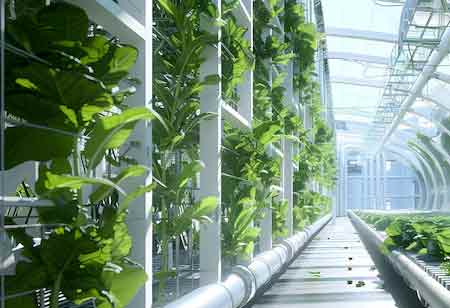Thank you for Subscribing to Agri Business Review Weekly Brief
Tech Advancements in Indoor Farming
Indoor farming technology is a revolutionary approach to agriculture that addresses issues like land scarcity, environmental impact, and food security.

By
Agri Business Review | Monday, April 28, 2025
Stay ahead of the industry with exclusive feature stories on the top companies, expert insights and the latest news delivered straight to your inbox. Subscribe today.
FREMONT, CA: As urbanization increases and environmental challenges grow, indoor farming technology becomes a game-changer for traditional agriculture. This innovative approach uses controlled indoor environments to grow crops, offering numerous advantages over conventional outdoor cultivation. Indoor farming solves land scarcity, reduces environmental impact, and enhances food security. The rise of this technology signals a significant shift toward more sustainable and efficient food production methods, helping meet the demands of a growing population.
Indoor farming techniques are all such methods that help grow plants in completely enclosed and controlled environments. These may range from vertical farming to hydroponics, aeroponics, and aquaponics. By design, all these methods use space and available resources economically, thereby tackling the disadvantages of conventional agriculture, including limited land availability and weather dependence. For example, vertical farming involves crops in stacked layers in a controlled environment, maximizing the space used and minimizing the requirement for large stretches of land. This approach offers an excellent way of producing large quantities of vegetables in a limited city space.
Hydroponics is an essential technique of indoor farming. It uses nutrient-rich solutions to grow plants, allowing better control of the nutrients and water plants take in. Compared to other conventional cultivation methods, this farming offers better growth rates and higher yields in poor soil conditions or where no soil is present. Hydroponic systems can be adjusted for the needs of different plant cultivators.
Aeroponics is cultivating plants in an air or mist environment, with the roots suspended and periodically misted with a nutrient-rich solution. This cultivation method consumes less water and nutrients but allows for fast plant growth. It is considered efficient, especially for high-value herbs and leafy green vegetables.
It simply combines aquaculture, fish farming, and hydroponics. In the system, fish waste becomes a nutrient supply for plants, and the plants filter and clean the water for the fish, ultimately forming a self-sufficient and resource-efficient relationship.
One of the most paramount benefits of indoor farming technology is its ability to offer fresh produce independent of outdoor weather conditions. Indoor farms can do this by simply using temperature, humidity, and light controls to ensure production all year round, minimizing dependence on seasonal cycles and lessening the impact of climate change. This is particularly valuable in areas experiencing extreme weather conditions or in those for which traditional farming cannot be done at all.
Indoor farming also diminishes agriculture's impact on the environment. It saves water and reduces the quantity of pesticides used, therefore not causing erosion. Thus, indoor agriculture is one of the best ways to produce food sustainably. This efficient use of resources and the potential for local food production reduces the carbon footprint from transport and distribution.
However, challenges in indoor farming technology do exist, such as high initial setup costs, advanced infrastructure required, and energy consumption for lighting and climate control. Offset against this, though, are improvements in efficient technologies and renewable energy sources that do much to help with the situation.





